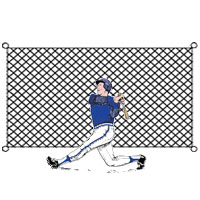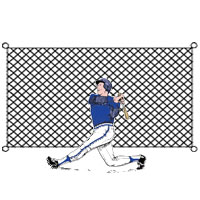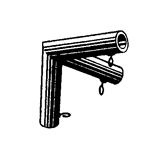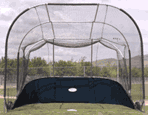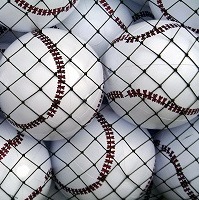
Backstops
What is a baseball backstop?
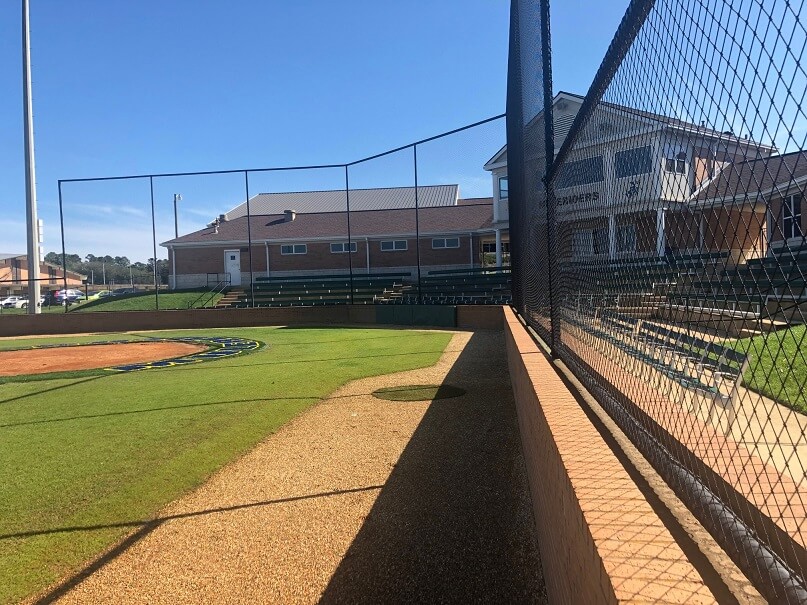
In the most simple terms, a backstop in baseball is the fence or netting behind home plate, designed to protect fans from foul balls and wild pitches. In 2014, 1,750 spectators were injured by errant or foul balls in the stands at MLB games, according to Bloomberg News. Within two years of that study, the MLB instated new regulations to extend current backstops to the inner edge of the dugouts. In 2018, all 30 teams again agreed to extend the backstop to reach the far ends of the dugouts. It has become a vital piece of safety gear for the entire MLB and that carries over to college, high school, and little league. The baseball backstop can even be used at home to create safe and efficient practice spaces for yourself or your aspiring ball players.
Baseball Backstops for Sale
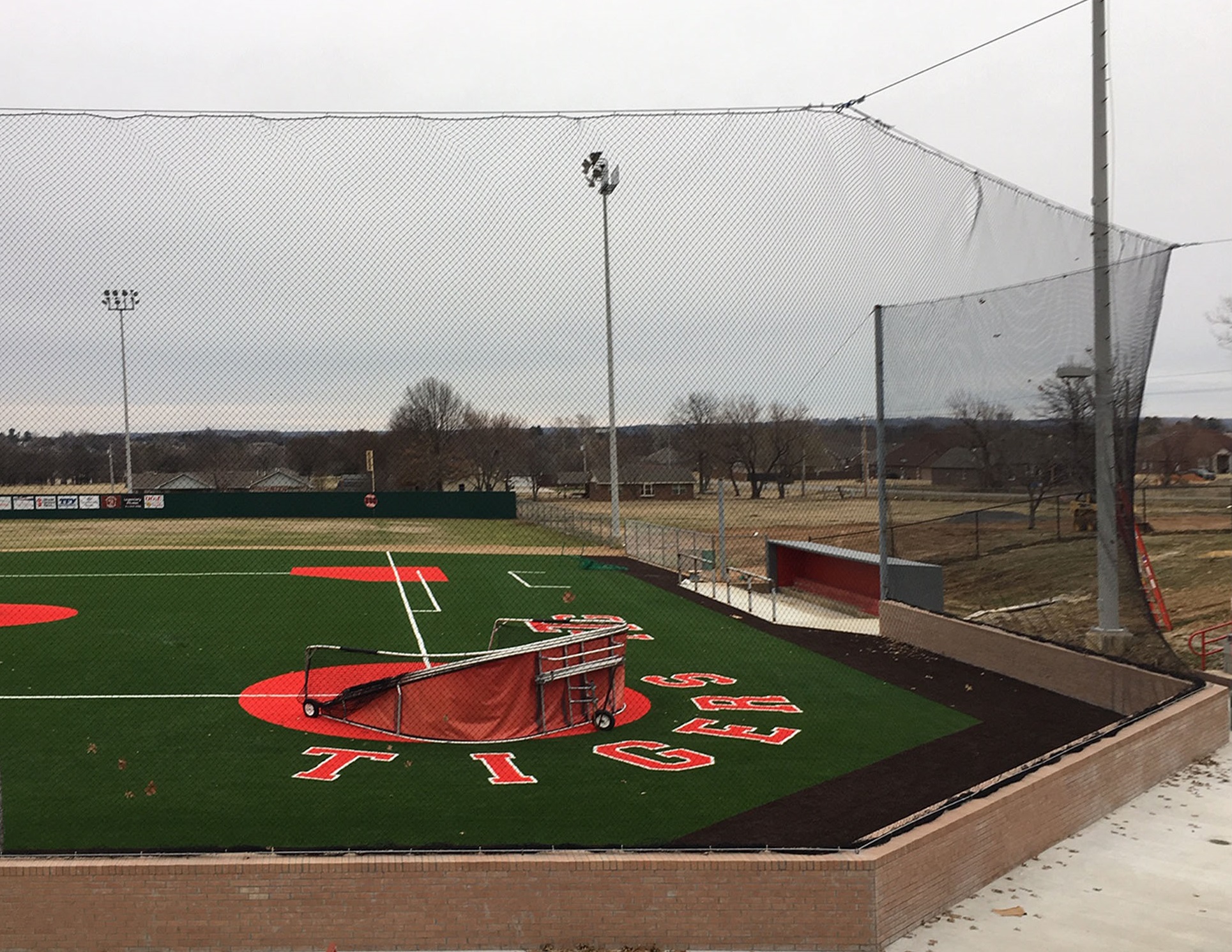
There are many options when choosing a baseball backstop for home, for your organization, or your business. For stadiums, the backstop is often custom designed and custom built. This is a service we offer at Memphis Net & Twine for all jobs big and small. Because we build all our nets to order, we can custom make your backstop to your exact specifications. We inventory 4 different twine sizes to meet the strength requirements of all levels of ball players. For high school baseball, softball, and youth leagues the backstop is often determined by the space available and the expected usage. We offer netting in various sizes and thicknesses to cover any size and design of backstop. Additionally, we offer chain link backstops in various sizes that are constructed from prefabricated panels. Chain link backstops can serve as a permanent addition to any ballpark. The prefabricated panels assembles quickly and easily. We also offer portable backstops that are ideal for adding some temporary protection for games and practices at community parks and homes. Finally, our Net Saver backdrops and Batting Cage Backdrop Protectors are used to protect the back of your batting cage and increase the life of your batting cage. The backdrops are best suited to protecting areas used for pitching or hitting practice.
How to Build a Baseball Backstop
Baseball backstop design is generally pretty simple. You want to create a half-moon design behind home plate that is large enough to catch wild pitches and foul balls. Your backstop dimensions will vary based on the location and surroundings you plan to build on and around. Study your area first. Call us to discuss ideas and plans if you'd like an experienced opinion. We're always happy to help. For high school and beyond, the baseball backstop should be at least 25 feet behind home plate. For softball and youth leagues, you can start a little closer but try to keep at least 20 feet of space between home plate and the backstop. You will want your backstop to be lined up with the centerline of your field. You can find the centerline by drawing a straight line through 2nd base and homeplate and continuing it back to your proposed backstop area.
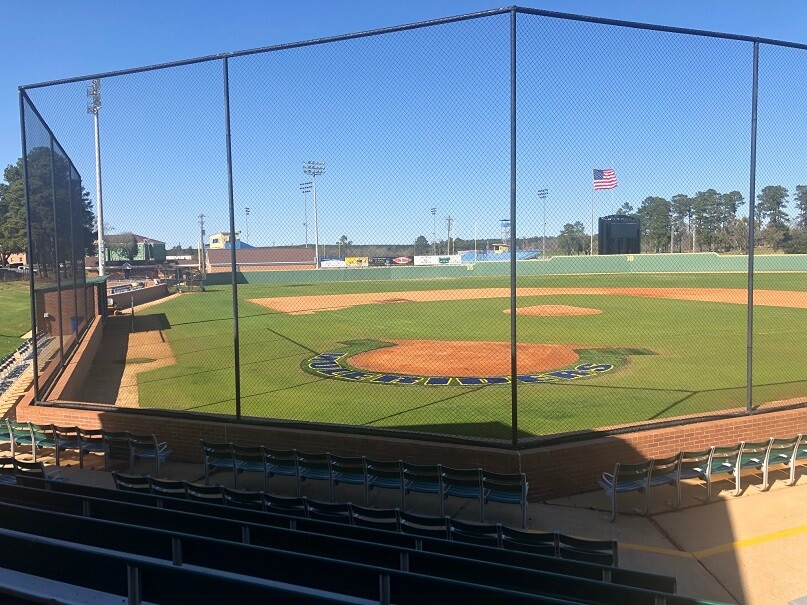
The next step is where the design begins. From this centerpoint, you need to lay out the panels you'll need to create your backstop. We custom make our backstops. Therefore you can pick the height and the width that best meets your needs. Pick a panel width that makes sense for your location and mark the spots between panels. Add as many panels as you need to insure adequate coverage for spectators. In the marked spots between panels, you'll need install support poles. Your support poles will need to be able to support the height and width of the backstop. Many people will use a local fence company to determine the appropriate support pole system needed. The support poles should be anchored into the ground with concrete and used as a support system to hold the backstop. If you're not confident in designing your own support system, speak to one of our experts for help.
How to Install a Baseball Backstop
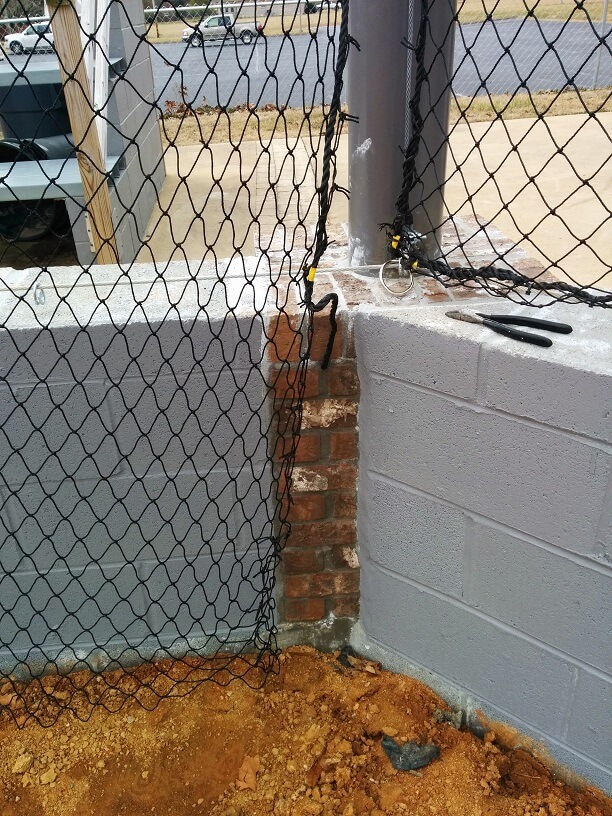
Once the poles are in place, the backstop netting installation is relatively easy. Our nets come with four 2 inch rings attached, one to each corner. Additional attached rings can be supplied for just $1 per ring. The most important thing is to install the baseball backstop so that gaps aren't left between the net and the poles. Ideally, the backstop netting system is installed tightly enough to offer complete protection but loose enough to allow balls to fall straight to the ground. We offer many additional pieces of hardware, rope, and twine to make assembly easy, no matter what design. Consult with our experts to learn ways we can help determine the correct hardware for your application.
Baseball Backstop Pads, Mats and Targets

Finally, you should examine a few accessories that can make your backstop safer and more efficient. Baseball backstop pads or padding can give some extra protection to your backstop in the areas where you need it most. Our Backstop Padding is UV treated, rot and mildew resistant, and designed for easy installation. In a similar vein, our Batting Cage Backdrop Protector can be used with your backstop to provide a strike zone target for throwing practice. The heavy vinyl construction also eases wear and tear on your backstop. Finally, we offer a selection of batter box and home plate mats. These are useful in several ways. They'll protect the ground underneath from spikes. They provide a target for pitching and a handy outline of the batting area. If you are placing your backstop somewhere other than baseball field, a batter box or home plate mat is highly recommended.

